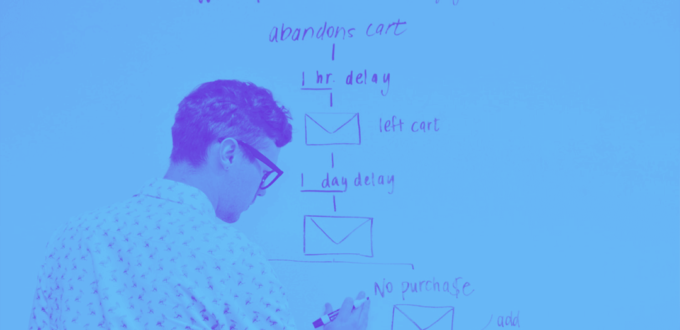Following on from Part 1, where we looked at funnel design, we now need to look at how to build it out and drive traffic to it so that it can convert.
If we look back at the coaching example, they’d firstly need a a number of pages which coincide with steps in their funnel, a simple one would look like this:
- Squeeze Page
- Sales Page
- One Time Offer (OTO) / Thank You Page
The first page is a “squeeze page” and its purpose is to harvest lead information (e.g. name, email address, mobile number, etc.) to build a prospect list which can be used later. Here the coach would typically offer some valuable information, e.g. a video or ebook, together with the FREE Online Assessment to get people to submit their details, that’s what we call lead generation.
This would then be followed by a “sales page”. Here the coach would pitch the benefits of their $150 Detailed Action Plan Report and show the “value” of purchasing that report. Typically you’d look to add at least 10 times the value of the purchase price to get people motivated to buy the report. This is done by adding additional items as free bonuses but that have value, e.g. an educational video series, an industry report, a case study, podcasts, etc.
The final page thanks the customer for the purchase and explains the next steps, for instance how and when the report will delivered. It also offers a limited one time offer (OTO), in this case offering a limited number of coaching programs at say 50% off ($500) for a limited period of time. Obviously the “value” here also needs to positioned like on the page before and suitable bonus content provided. Here you could add such things as access to a closed Facebook group for support, weekly podcasts, monthly articles, etc. to the boost value. The scarcity here also gets people to commit upfront.
Now that the pages have been designed, the pages are built and hosted on a platform called ClickFunnels. Each page is built using the assets mentioned in Part 1 where spoke about ad and page copy (words), images/videos and links any additional content that is required for the pages, e.g. ebooks, articles, case studies, podcasts, etc.
Lead information is captured and added to a list in an email campaign management software platform like MailChimp. These platforms integrate easily with ClickFunnels and are used to send out welcoming emails to leads. It also used to send out the Detailed Action Plan report to those that purchased it, and login in formation to those that bought the online coaching program.
The last part now, is to drive traffic to the funnel, i.e. getting people to the “squeeze page” at the top of the funnel. Typically “paid for” ads are used on platforms like Google and Facebook to drive traffic to the “squeeze page” and the funnel then basically takes care of itself, constantly producing the desired amount of new customers.
Tracking the amount of leads, assessments completed, reports sold and new coaching program customers on weekly or monthly basis, will provide all the data required to tweak the funnel till it converts the desired numbers of customers required consistently.
That’s the entire funnel building process in a nutshell. If you need more information about this, contact us.


I’m extremely pleased to uncover this web site.
I want to to thank you for your time for this particularly fantastic read!!
I definitely appreciated every bit of it and I have
you book-marked to see new things in your blog.
Thanks for the positive feedback.
I know this if off topic but I’m looking into starting my own blog and was wondering what all is required to get setup?
I’m assuming having a blog like yours would cost a pretty penny?
I’m not very internet savvy so I’m not 100% sure. Any tips or
advice would be greatly appreciated. Thanks
Hi Ashley. You’ll need to register a domain name first and host it with an Internet Service Provider. Then you can . install a blogging platform like WordPress there. You create and post your blogs from within WordPress. If you need help with that, there are freelancers that can help you at http://www.fiverr.com. There’ll be a small monthly hosting fee by the service provider that hosts your domain, so it’s not prohibitively expensive. Hope that helps.
Spot on with this write-up, I truly think this amazing site needs much more attention. I’ll probably be back again to
read through more, thanks for the info!
I think other web site owners should take this web site as an model – very clean and great style and design, not to mention the content. You’re an expert in this area!
Thank you
Its such as you learn my mind! You seem to grasp a lot about this,
like you wrote the guide in it or something. I feel that you simply can do with some p.c.
to power the message home a little bit, however other than that, this is
magnificent blog. A great read. I will certainly be back.
I am really inspired along with your writing talents as neatly as with the
layout for your weblog. Is this a paid subject matter or did
you customize it your self? Anyway stay up the excellent high quality writing,
it is rare to look a nice blog like this one today..